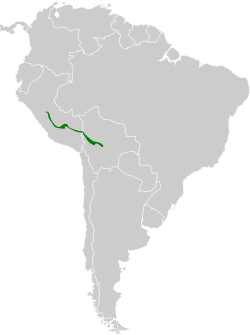| Three-striped hemispingus | |
|---|---|
 | |
| Scientific classification | |
| Kingdom: | Animalia |
| Phylum: | Chordata |
| Class: | Aves |
| Order: | Passeriformes |
| Family: | Thraupidae |
| Genus: | Microspingus |
| Species: | M. trifasciatus |
| Binomial name | |
| Microspingus trifasciatus Taczanowski, 1874 | |
 | |
The three-striped hemispingus (Microspingus trifasciatus) is a species of bird in the family Thraupidae.
It is found in Bolivia and Peru. Its natural habitat is subtropical or tropical moist montane forests.

